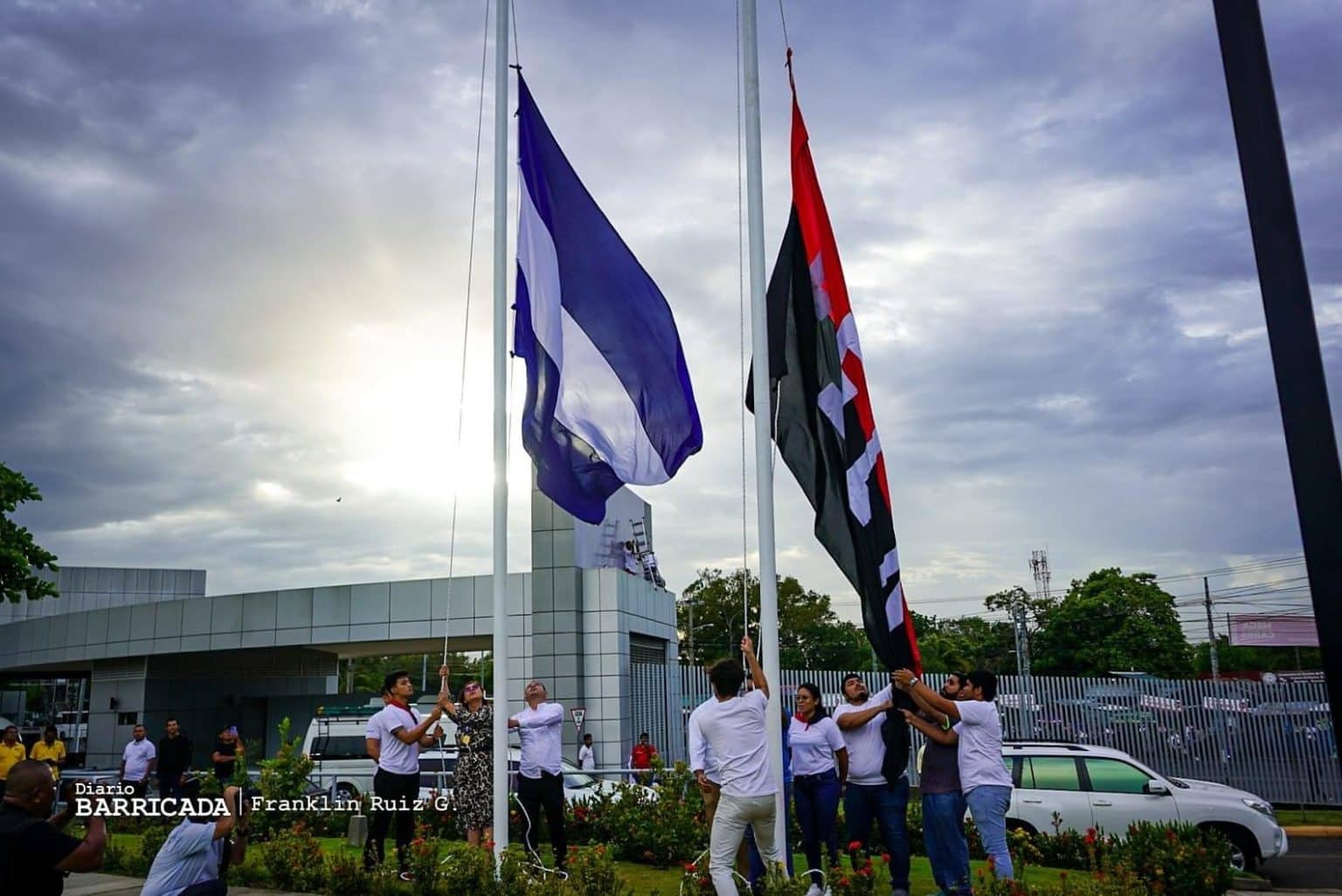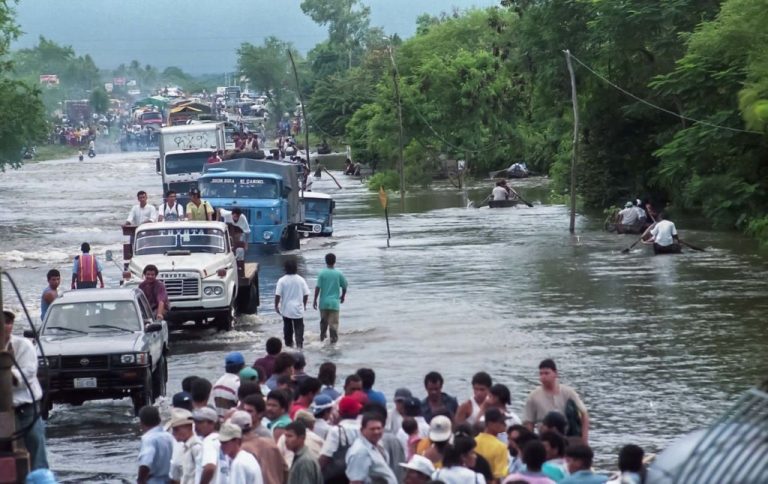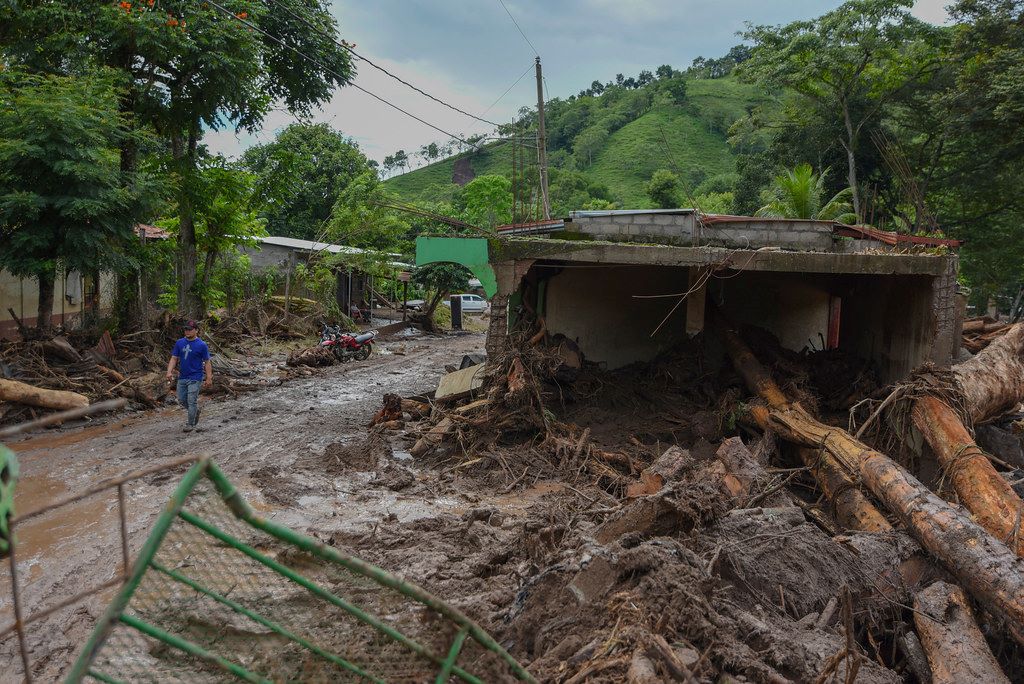31 de octubre 2023

European Concern over Lack of Academic Freedom in Nicaragua

PUBLICIDAD 1M
PUBLICIDAD 4D
PUBLICIDAD 5D
Honduras and Nicaragua were ravaged by Hurricane Mitch on October 28 – 31, 1998. The storm left 10,000 dead in the region

A line of vehicles crosses an inundated stretch of the Pan American Highway, at the exit from the Nicaraguan city of Tipitapa. Photo: Oscar Navarrete
Twenty-five years after the passing of Hurricane Mitch – one of the most destructive hurricanes in modern history that left 10,000 dead in Central America – experts warn that the region is now threatened by “superimposed crises.” These have sharpened inequality and poverty, conditions that leave these countries ever more vulnerable to extreme climate events.
Honduras and Nicaragua in particular were severely affected by Mitch between October 28 – 31 of 1998. In Nicaragua, the greatest damage was registered in rural areas within the departments of Chinandega, Leon, Matagalpa, Jinotega, Esteli, Nueva Segovia, Madriz, Rivas and Granada, where the hurricane left 3,800 deaths in its wake.
Now, Latin America is confronting ever greater impacts from climate change. In its report, “State of the Climate in Latin America and the Caribbean 2020”, the World Meteorological Organization warned that the “record” hurricanes and floods in Central America that year were the region’s “new normal.”
“Those of us who experienced firsthand the humanitarian catastrophe left by Hurricane Mitch in 1998, thought that we’d never again witness a storm of equal dimensions. However, in 2020, Hurricanes Eta and Iota affected over 7 million people, 4 million of them in Honduras, Nicaragua and Guatemala, the same countries that had also been most severely ravaged by Hurricane Mitch,” Martha Keays told the EFE news service. At the time of Mitch, Keays was head of the Central American delegation of the International Federation of the Red Cross and the Red Crescent.
Triple crisis cancels out the region’s advances
Keays, who is now the International Red Cross Regional Director for the Americas, explained that during the years between the 1998 tragedies sparked by Mitch and the 2020 disasters of Eta and Iota, Central America and the humanitarian organizations were transformed through a strengthening of the national norms and systems for responding to disasters, and an improvement in volunteer capacities, among other things.
“This allowed, for example, for a far lower number of fatal victims from Eta and Iota than those caused by Mitch,” she affirmed.
Eta and Iota made landfall in Central America practically one after another during the first two weeks of November 2020. They left some 200 dead and missing, and many millions of dollars in damaged infrastructure and ruined harvests, especially in Nicaragua, Honduras and Guatemala.

But at the same time, Keays explained, the climate and environmental crises and the Covid-19 pandemic have exerted a cumulative effect on the region’s ecosystems. These have “caused a setback of some 30 years in the struggle against poverty and inequality, which were already very prevalent in the region.”
Hence, “that ‘new normality’, that shouldn’t be” in Central America, “will be marked by superimposed social, economic and environmental crises that increase the possibility that the natural threats cause more damage, above all among population that have been historically marginalized, such as women, children, migrants, the elderly, the disabled, indigenous peoples and the LGBTQI population.
“And when there’s high vulnerability, you don’t need many droughts, hurricanes or storms to destroy a community. Even though it be relatively minor, one single event can be enough,” Keays asserted.
Poverty and inequality accelerate vulnerability
Some 50 million people live in Central America, many of them in impoverished conditions. That social dynamic makes the region ever more vulnerable as marginalized populations settle in flood-prone zones, on the slopes of mountains or volcanoes, or in other high-risk zones that are often the scenes of great tragedies.
“Poverty and inequality always serve as accelerators of vulnerability, as they corrode the communities’ resilience,” Keays explained.
But what’s happening now, she added, “is that there are ever greater numbers of people affected by more than one factor of vulnerability. That is, there are ever more who – in addition to living in poverty – are migrants, or don’t have work, or lose their means of making a living due to the climate crisis, or are affected by violence, suffer discrimination, or are excluded from public services.”
The humanitarian official underlined the fact that this is all taking place, “in a context of reduced funding for humanitarian actions, and where the large-scale crises that affect other regions of the world dominate global attention and investment.”
In order to increase resilience in Central America, Keays spoke of promoting measures such as early warning systems, humanitarian responses based on weather predictions, and financing initiatives for adopting to the changing climate, as well as protocols for prompt action.
This article was originally published in Spanish in Confidencial and translated by Havana Times.
PUBLICIDAD 3M
Agencia de noticias internacional con sede en Madrid, España. Fundada en Burgos durante la guerra civil española en enero de 1939.
PUBLICIDAD 3D